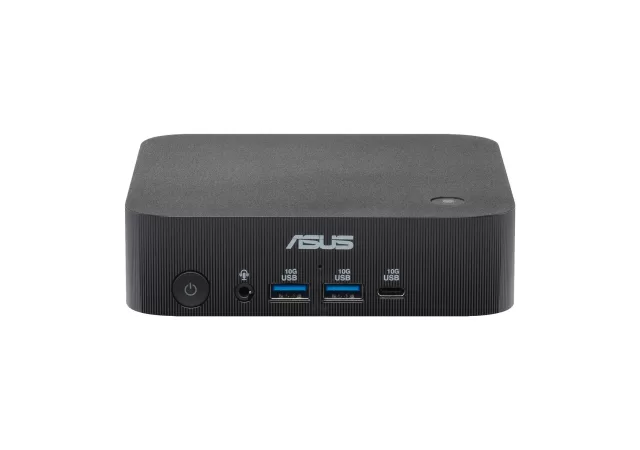SYDNEY, May 19, 2020 /PRNewswire/ — Manhattan Associates Inc. (NASDAQ: MANH) predicts five key business and technology trends that will have an impact on Australian retailers as they begin to reopen following the easing of COVID-19 restrictions.
“The impact of COVID-19 on the Australian retail supply chain should not be understated. The implementation of isolation measures led to many traditional retail businesses standing-down staff or closing. At the same time, other retailers experienced spikes in ecommerce orders and struggled to meet this unexpected demand. While COVID-19 has caused significant disruption to the local retail sector, Australia is in the fortunate position of reporting very low levels of community transmission to the extent that the government is relaxing lockdown rules, which will lead to a return in retail foot-traffic over time,” said Raghav Sibal, Manhattan Associates’ Managing Director for Australia and New Zealand.
However, many retailers will find themselves in a situation where they return to trading, only to find they are ‘stuck’ with summer stock at the beginning of winter as result of sudden closures in March. This will have major impacts on not only store-based activities, but also the logistics infrastructure that supplies them.
As the Australian retail sector looks at re-opening its doors, what are the five things retailers need to consider today to ensure their operations will adapt to the ‘new normal’?
Increased use of Mobile POS to eliminate customer bottlenecks
With social distancing remaining in place across all states in Australia, eliminating areas of high concentration of customers and staff in specific locations must be a major consideration. One of the biggest bottlenecks of people within a retail store is the check-out counter, where customers must line-up to be served. While marking floors with safe-spacing points for customers to stand while waiting to be served may help at a rudimentary level, retailers should move away from fixed POS terminals that require customers to queue. Additionally, self-service POS may not be the answer either as they require customers to touch the same device over and over, and often don’t work when customers are using gloves. Mobile POS technologies built into mobile computers allow retail staff to assist customers with product information, stock availability and on-the spot transactions from anywhere in the store, eliminating the need for check-out lines or use of self-service.
Expansion of customer support beyond the store
The shutdown of physical stores, alongside the rapid growth of ecommerce orders as a result of COVID-19 restrictions, exposed the customer service deficiencies of many retailers across the country. Automated chatbots were unable to adequately deal with many customer queries and complaints, while contact centers operating with skeleton crews quickly became overwhelmed. Retailers should have, and should consider retaining some store-based customer service staff to support phone and chat services, especially given ecommerce levels are expected to remain high. With the use of flexible telecommunications solutions, customer service functions can easily be transferred to retail staff to handle at home or in stores that are open but have seen a significant drop in foot-traffic.
Retailers to take control of their reverse logistics operations
Customer returns became more complicated for retailers when purchased items couldn’t be returned to stores due to closures and this resulted in larger volumes of mail-returns. Mail returns are often managed by reverse-logistics providers, who were themselves disrupted by COVID-19 social distancing rules for warehouse operations, which has led to lengthy delays in retailers receiving the stock again for resale. And if the stock being returned was seasonal, these third-party reverse logistics delays could result in products not being able to be resold at all. To ensure full control over the sales and returns supply chains, retailers should take control of their own reverse logistics operations to speed the time in which they receive returned stock for resale.
Investment into inventory visibility needed
Australian retailers cannot sell what they cannot see. Online order levels grew to record highs following the recent mass store closures across Australia. Many retailers were simply unable to keep up with demand and struggled to find the right inventory to fulfil new orders. This resulted in many retailers resorting to cancelling sales, or only partially fulfilling them. The common cause for these issues is that the retailers’ own warehouse management systems (WMSs) were telling them that they had stock to sell, but because of the massive volumes going through their Distribution Centre (DC), often by the time that orders were ready to pick-and-ship, the inventory was no longer available. This false record of inventory arises when an older WMS is in place that does not update inventory levels in real-time. Australian retailers need to upgrade to a WMS that models demand and instantaneously updates inventory details to ensure an accurate picture of stock on hand for sale and shipment every time.
‘Fulfilling from store’ is the new standard for retail flexibility today
The consumer behavioural shift to online shopping, which has been accelerated by COVID-19, has increased the business case for an expansion of hybrid fulfilment methods that blend ecommerce and store resources. Hybrid fulfilment offers retailers increased flexibility enabling them to pivot, scale, adjust and respond as things change and return to normal. Fulfilling online orders in retail stores is a by-product of this new economy. Customers enjoy picking up online purchases in local stores, which satisfies their insatiable demand for immediacy and flexibility. Further, ship-from-store is vital in an age where ecommerce orders are booming and bricks and mortar operations are operating at much lower levels. It makes little sense for a retailer to ship a large electronics item from their Melbourne-based warehouse to Cairns, if that same item is already available in a retail store in large volumes in Cairns. Technologies exist today that support underutilised retail staff to handle store order picking, staging, packing, shipping for fast delivery and customer pickup.
“Reopening for business while COVID-19 is still active in the community presents tangible challenges to the Australian retail sector. There is much to consider to ensure businesses are properly prepared for the ‘new normal.’ The trends identified by Manhattan Associates will help prepare retailers for trading through these challenging times, but also can set businesses up for future success beyond COVID-19 by offering increased long term operational flexibility and scalability,” said Raghav.
Receive up-to-date product, customer and partner news directly from Manhattan Associates on LinkedIn, Twitter and Facebook.
About Manhattan Associates
Manhattan Associates is a technology leader in supply chain and omnichannel commerce. We unite information across the enterprise, converging front-end sales with back-end supply chain execution. Our software, platform technology and unmatched experience help drive both top-line growth and bottom-line profitability for our customers.
Manhattan Associates designs, builds and delivers leading edge cloud and on-premises solutions so that across the store, through your network or from your fulfillment center, you are ready to reap the rewards of the omnichannel marketplace. For more information, please visit www.manh.com.au.
Photo – https://photos.prnasia.com/prnh/20200519/2807634-1?lang=0







